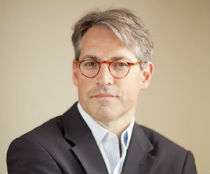Social scientists have long found women tend to be more religious than men – but Gen Z may show a shift
News > Politics & Government News

Audio By Carbonatix
8:31 AM on Friday, September 12
By Ryan Burge
Eds: This story was supplied by The Conversation for AP customers. The Associated Press does not guarantee the content.
Ryan Burge, Washington University in St. Louis
(THE CONVERSATION) For decades, one of the most consistent findings in religion research has been that women tend to be more religious than men. This holds true across dozens of countries and on nearly every measure of religiosity, from how often someone prays to how important faith is in their lives.
Social scientists have struggled to pinpoint a universal cause for this pattern. Theories run the gamut – from the claim that it has something to do with women being more risk averse to the argument that religion offers women support for social responsibilities around birth, death and raising children.
In the past few years, however, survey data in the U.S. has started to tell a different story. Today, there is less empirical evidence that women are more religious than men – a debate I’ve tracked closely as a quantitative scholar of American religion. Looking at Generation Z, in particular, a number of results have raised some eyebrows, pointing toward other divides throughout the country.
Shrinking gap
In 2023, the American Enterprise Institute’s Survey Center on American Life found that 39% of Gen Z women say they do not have a religious affiliation, compared to 34% of men from the same generation. The past several waves of data from the Cooperative Election Study, a national survey, have found that men born after 1990 – a mix of younger millennials and Gen Z – are slightly more likely to attend religious services weekly than women of the same age.
When I give a lecture or presentation, often the first question I’m asked is about this surprising result.
I warn people to take it with a grain of salt. According to data from the 2022 General Social Survey, one of the most well-respected national polls, the opposite is true: among Americans ages 18-45, women are still more likely to attend a house of worship nearly every week. And the Pew Religious Landscape Study, which was released in February 2025, concludes, “While the gender gap in American religion appears to be narrowing, there are still no birth cohorts in which men are significantly more religious than women.”
All together, a growing body of survey evidence suggests that the overall religiosity of young American adults does not vary significantly by gender.
Anecdotal reports about scores of young men flocking to church or joining religious communities like Eastern Orthodoxy seem to grab headlines. However, the idea of a reversal in the gender gap is not supported by evidence – only that it is narrowing.
Drifting apart
If America’s gender gap around religion is changing, perhaps politics can help explain why.
A growing body of survey data suggests that overall, young men are moving further to the right on political matters, while young women are becoming increasingly progressive.
An NBC News poll in April 2025 found that among people ages 30-44, men were about 9 percentage points more likely to approve of Donald Trump’s job performance than women of the same age. Among those ages 18-29, the gap widened to a staggering 21 points.
A few months later, NBC polled nearly 3,000 young Americans about how they define success, asking them to select the top three factors from a list of 13. Overall, men between 18-29 rated “being married” and “having children” slightly higher than women their age. Among Gen Z men who voted for Trump, having children was the most important. Women who voted for Kamala Harris, meanwhile, ranked children near the bottom.
The largest religious traditions in America today are evangelical Protestant Christianity and the Catholic Church. Both groups’ teachings emphasize “traditional” gender roles, marriage and having children. For a growing wave of young progressive women, such teachings are at odds with their desire to make advances in the workplace and society. Some analysts argue that those tensions, as well as views on LGBTQ+ rights, are driving women away from institutional religion.
Opposite directions
As a result, Generation Z may be the most visible manifestation of the growing “God gap” in American politics.
In short, the religious compositions of the two major political parties have gone in opposite directions. In the 1990s, 67% of Republicans said they believed in God without a doubt, and 63% of Democrats said the same, according to my analysis of General Social Survey data. By 2022, certain belief in God had dropped to 39% among Democrats, while holding fairly steady among Republicans, at 63%. Twenty-eight percent of Democrats regularly attend a house of worship, compared to 42% of Republicans; in the 1970s, the gap was only 4 percentage points.
This all points to a broader, potentially more polarized future for the American public. Already, there is evidence that a growing number of people choose their house of worship based on political tribe, not just theological beliefs, making congregations less diverse. Women’s and men’s competing interests and preferences may make it harder to find a suitable partner. Common ground may be harder to find when there are fewer chances for interaction and conversation.
Ultimately, these trends suggest a future where polarization extends beyond politics and into the very fabric of American life – shaping where people worship, who they marry, and how communities form.
The Conversation is an independent and nonprofit source of news, analysis and commentary from academic experts. The Conversation is wholly responsible for the content.







